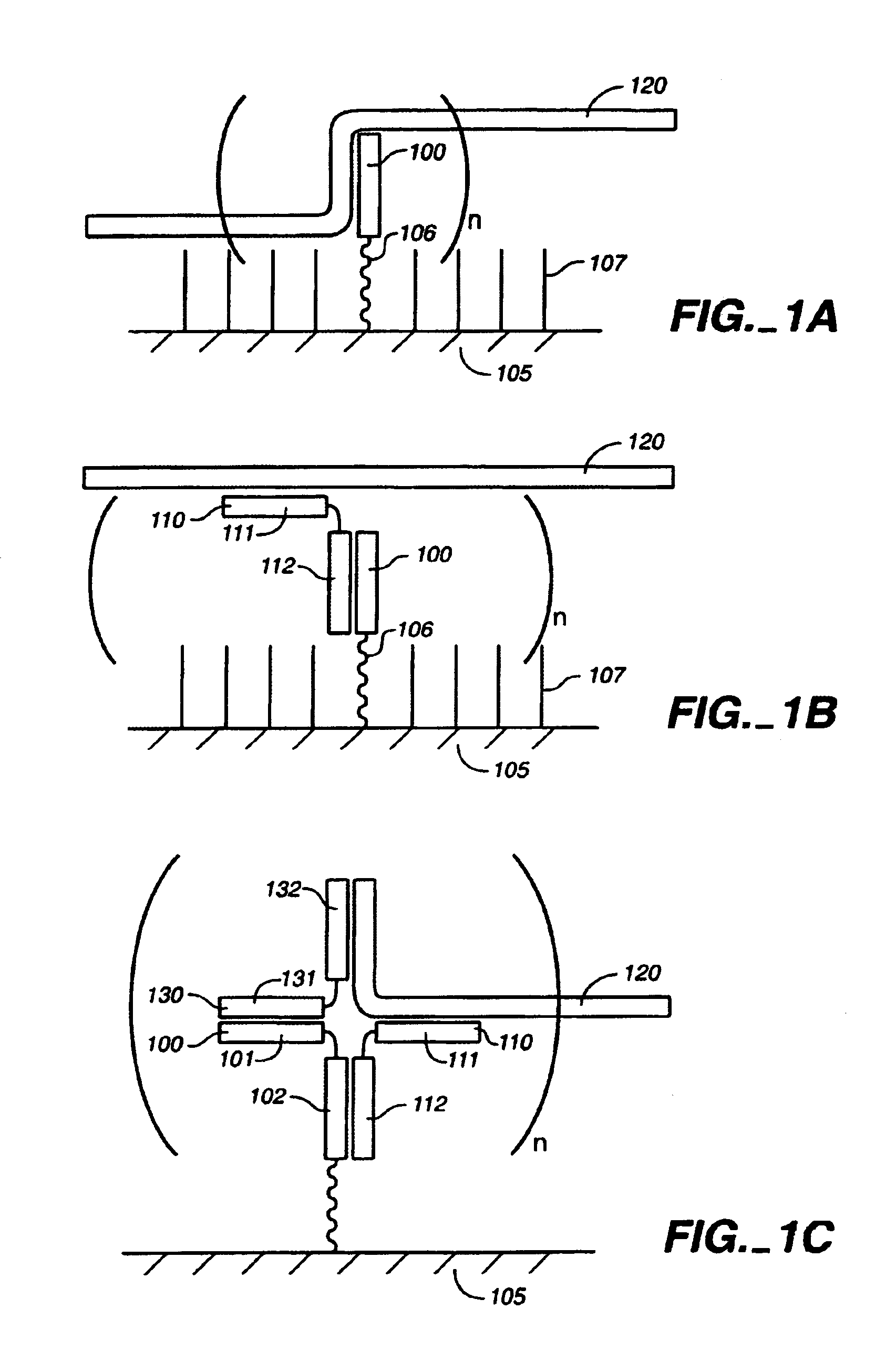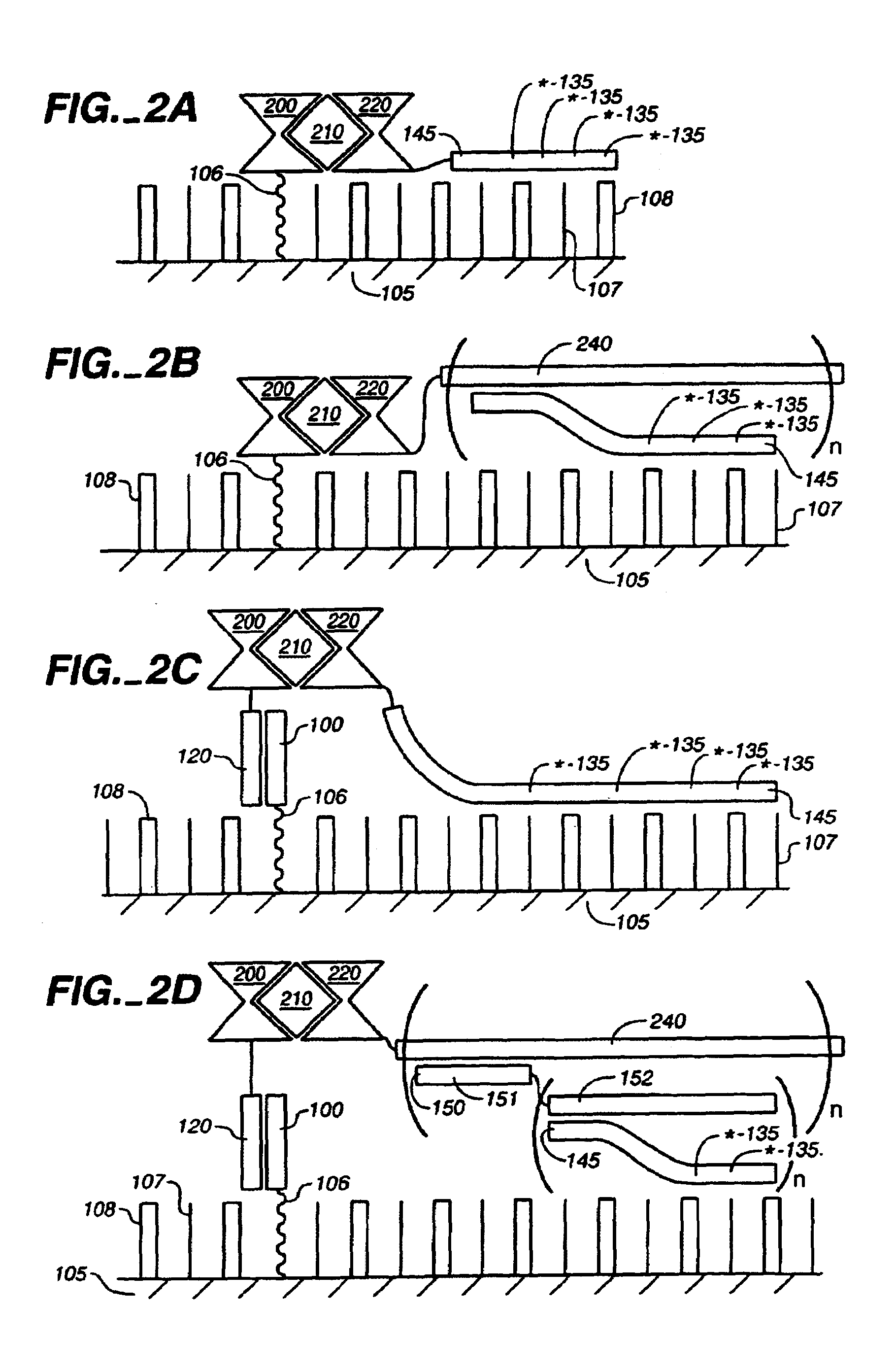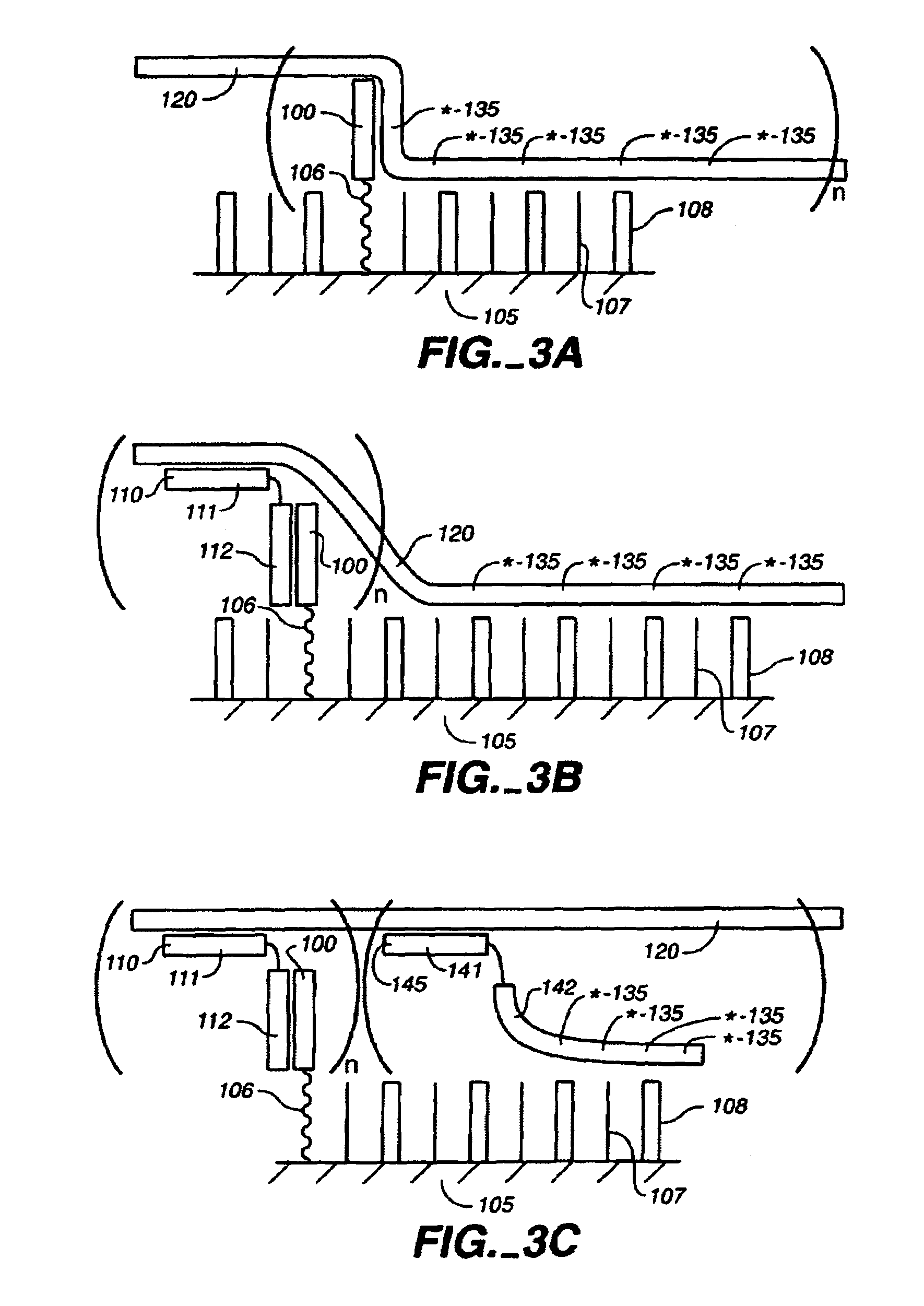Compositions for the electronic detection of analytes utilizing monolayers
a technology of electronic detection and monolayers, applied in the direction of specific use bioreactors/fermenters, organic chemistry, after-treatment of biomass, etc., can solve the problem that the technique is generally limited to the detection of differences in bulk (or dielectric) impedan
- Summary
- Abstract
- Description
- Claims
- Application Information
AI Technical Summary
Problems solved by technology
Method used
Image
Examples
example 1
Synthesis of Nucleoside Modified With Ferrocene at the 2′ Position
[0460]The preparation of N6 is described as shown in FIG. 9.
[0461]Compound N1. Ferrocene (20 g, 108 mmol) and 4-bromobutyl chloride (20 g, 108 mmol) were dissolved in 450 mL dichloromethane followed by the addition of AlCl3 anhydrous (14.7 g, 11 mmol). The reaction mixture was stirred at room temperature for 1 hour and 40 minutes, then was quenched by addition of 600 mL ice. The organic layer was separated and was washed with water until the aqueous layer was close to neutral (pH=5). The organic layer was dried with Na2SO4 and concentrated. The crude product was purified by flash chromatography eluting with 50 / 50 hexane / dichloromethane and later 30 / 70 hexane / dichloromethane on 300 g silica gel to afford 26.4 gm (73%) of the title product.
[0462]Compound N2. Compound N1 (6 g, 18 mmol) was dissolved in 120 mL toluene in a round bottom flask. zinc (35.9 g, 55 mmol), mercuric chloride (3.3 g, 12 mmol) and water (100 mL) we...
example 2
Synthesis of “Branched” Nucleoside
[0467]The synthesis of N17 is described as shown in FIG. 10.
[0468]Synthesis of N14. To a solution of Tert-butyldimethylsily chloride (33.38 g, 0.22 mol) in 300 mL of dichloromethane was added imidazole (37.69 g, 0.55 mol). Immediately, large amount of precipitate was formed. 2-Bromoethanol (27.68 g, 0.22 mol.) was added slowly at room temperature. The reaction mixture was stirred at this temperature for 3 hours. The organic layer was washed with water (200 mL), 5% NaHCO3 (2×250 mL), and water (200 mL). The removal of solvent afforded 52.52 g of the title product (99%).
[0469]Synthesis of N15. To a suspension of adenosine (40 g, 0.15 mol) in 1.0 L of DMF at 0° C., was added NaH (8.98 gm of 60% in mineral oil, 0.22 mol). The mixture was stirred at 0° C. for 1 hour, and N14 (35.79 gm, 0.15 mol) was added. The reaction was stirred at 30° C. overnight. It was quenched by 100 mL ice-water. The solvents were removed under high vaccum. The resultant foam was...
example 3
Synthesis of Nucleoside with Ferrocene Attached via a Phosphate
[0472]The synthesis of Y63 is described as shown in FIG. 11.
[0473]Synthesis of C102: A reaction mixture consisting of 10.5 gm (32.7 mmol) of N2, 16 gm of potassium acetate and 350 ml of DMF was stirred at 100° C. for 2.5 hrs. The reaction mixture was allowed to cool to room temperature and then poured into a mixture of 400 ml of ether and 800 ml of water. The mixture was shaken and the organic layer was separated. The aqueous layer was extracted twice with ether. The combined ether extracts were dried over sodium sulfate and then concentrated for column chromatography. Silica gel (160 gm) was packed with 1% TEA / Hexane. The crude was loaded and the column was eluted with 1% TEA / 0–100% CH2Cl2 / Hexane. Fractions containing desired product were collected and concentrated to afford 5.8 g (59.1%) of C102.
[0474]Synthesis of Y61: To a flask containing 5.1 gm (17.0 mmol) of C102 was added 30 ml of Dioxane. To this solution, small ...
PUM
| Property | Measurement | Unit |
|---|---|---|
| frequency | aaaaa | aaaaa |
| peak current | aaaaa | aaaaa |
| Tm | aaaaa | aaaaa |
Abstract
Description
Claims
Application Information
 Login to View More
Login to View More - R&D
- Intellectual Property
- Life Sciences
- Materials
- Tech Scout
- Unparalleled Data Quality
- Higher Quality Content
- 60% Fewer Hallucinations
Browse by: Latest US Patents, China's latest patents, Technical Efficacy Thesaurus, Application Domain, Technology Topic, Popular Technical Reports.
© 2025 PatSnap. All rights reserved.Legal|Privacy policy|Modern Slavery Act Transparency Statement|Sitemap|About US| Contact US: help@patsnap.com



